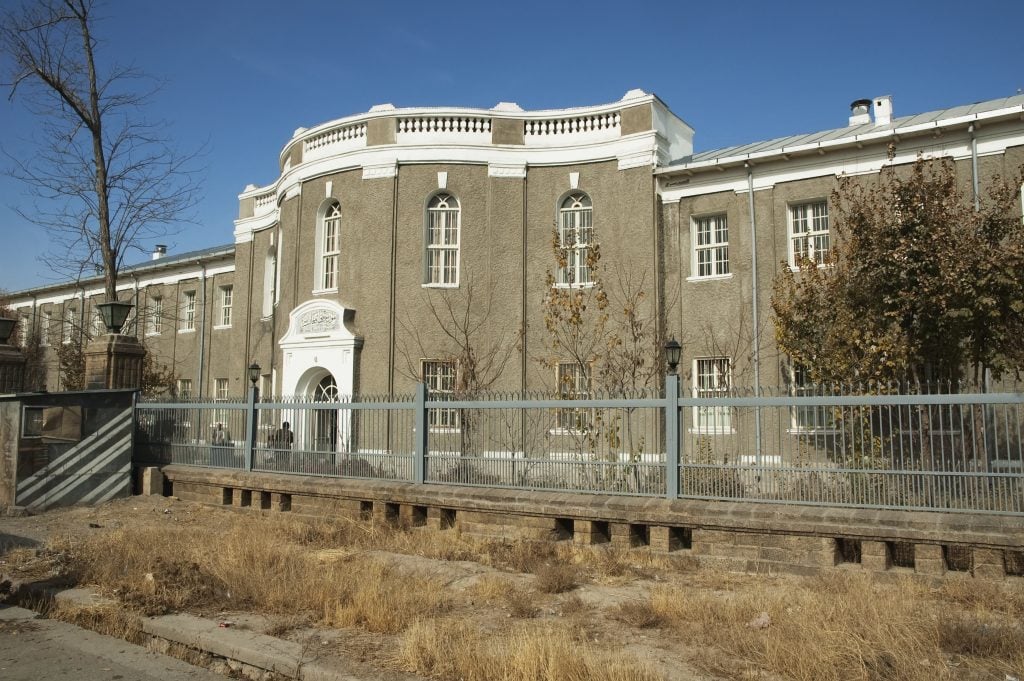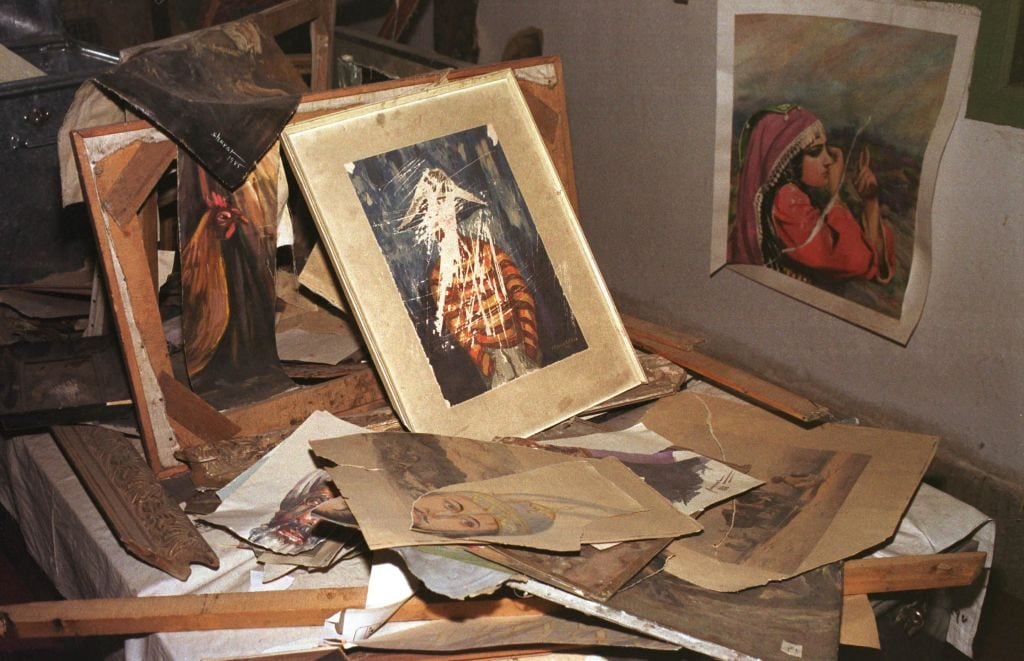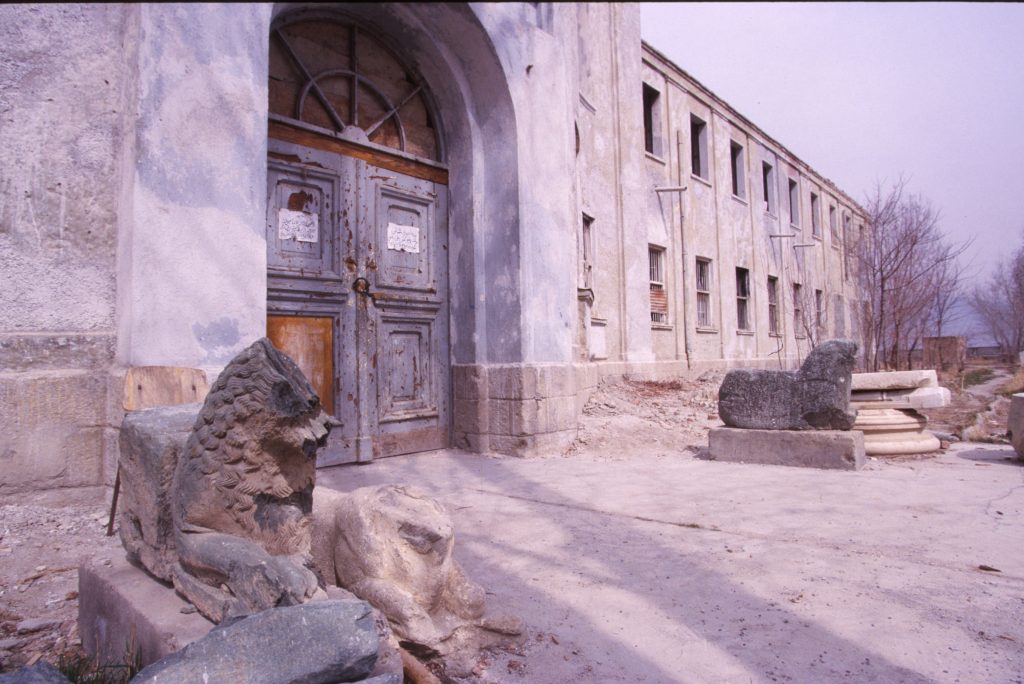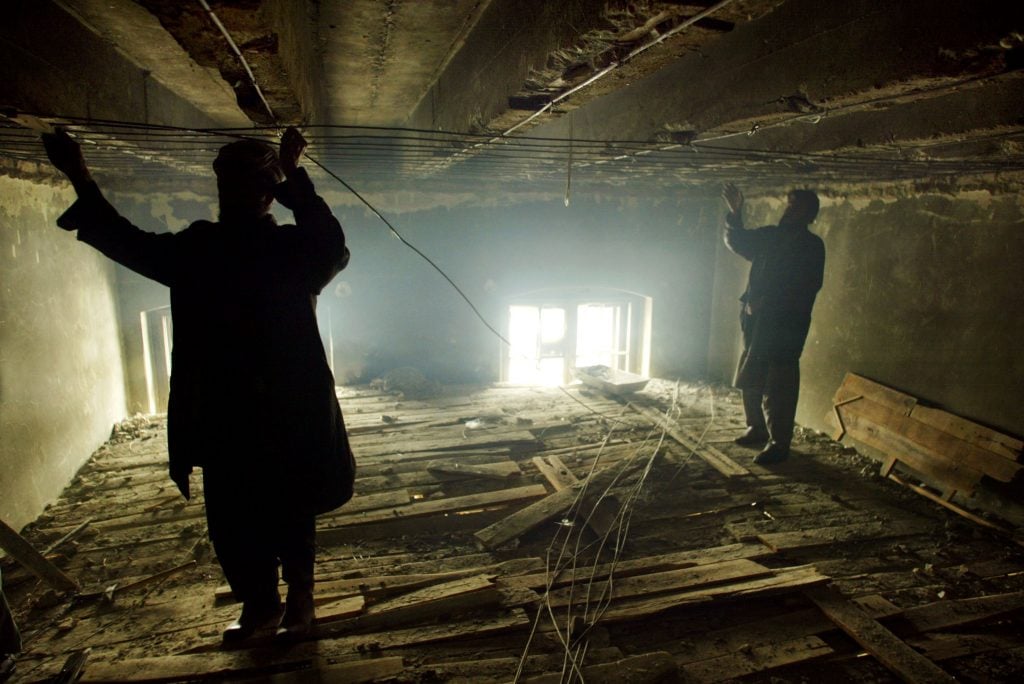Politics
The Embattled National Museum of Afghanistan Has Reopened, With Taliban Security Negotiated by its Director
"I was ready to give my life for it," says the museum's leader, Mohammad Fahim Rahimi.

"I was ready to give my life for it," says the museum's leader, Mohammad Fahim Rahimi.

Sarah Cascone

The National Museum of Afghanistan in Kabul has reopened under Taliban control. The Islamic militant group, which rejects representative art as idolatrous, returned to power following August’s problem-plagued withdrawal of U.S. and NATO troops from the nation, triggering worldwide concern for Afghan artists and heritage.
In 2001, the Taliban attacked the museum, looting an estimated 70 percent of its 100,000-object collection. In their quest to enforce Sharia law, the Taliban destroyed priceless cultural heritage across the country, including, most infamously, the 1,500-year-old Buddhas of Bamiyan, carved into a mountainside and measuring 180 feet tall.
Coming on the heels of two decades of war, the destruction took years to undo, but UNESCO and other experts painstakingly rebuilt the museum and its holdings, which now include 50,000 artifacts.
So when the Taliban re-entered Kabul on August 15, the museum’s director, Mohammad Fahim Rahimi, feared a repeat performance.

Paintings from the Kabul National Gallery that were shredded by the Taliban are preserved in the city’s museum on April 23, 2002. Under the rule of the Taliban, all forms of pictures and imagery were banned. Photo by Kaveh Kazemi/Getty Images.
“It was the worst day of my life,” he told the National in September. “I felt the responsibility for the museum: that I should take care of it, and that I should not leave it. I was ready to give my life for it.”
But the Taliban didn’t attack the museum or harm the ancient objects in the collection. Within days, Rahimi had enlisted Taliban members to guard the institution. The militant group continues to provide security, reopening the facility on November 25. Rahimi and other staff members, including women, still have jobs, though they have not been paid a salary since August—an issue all Afghan civil servants now share.
“The problem is that the country’s assets and money have been frozen under sanctions ordered by the U.S. government,” Cheryl Benard, president of ARCH International, the Alliance for the Restoration of Cultural Heritage, told Artnet News in an email. “Some international organizations have been working hard to find a way to pay teachers and health care workers by flying cash in directly, or by unfreezing smaller amounts held by the World Bank for direct payment to teachers and health care workers. But the museum staff are not included in those efforts.”
Despite regular power outages and a broken generator that sometimes leaves galleries in darkness, the museum is welcoming between 50 and 100 visitors a day—including Taliban members, some of whom walk the halls wielding assault rifles.
“This is from our ancient history, so we came to see it,” a 29-year-old fighter named Mansoor Zulfiqar told the Associated Press.
Ahead of the U.S. withdrawal, ARCH International had worked with Islamic theologians to help convince the Taliban of the importance of cultural preservation, and found the group surprisingly receptive.
“In the end, we didn’t need this,” Benard said. “On their own initiative, they even sent an order to their commanders in the field, to not destroy any historic sites or structures and to prevent looting.”
The Taliban, which seems more concerned today about its public image and maintaining international relations than it was 20 years ago, also issued a statement in February promising not to engage in looting and to protect Afghanistan’s rich cultural heritage.

Kabul’s National Museum, which was looted during Afghanistan’s 20 years of war, is now locked up and in decline March, 4 2000. Photo by Robert Nickelsberg/Liaison.
“As Afghanistan is a country replete with ancient artifacts and antiquity, and that such relics form a part of our country’s history, identity and rich culture, therefore all have an obligation to robustly protect, monitor and preserve these artifacts,” it said.
“Taliban are committed now to cultural preservation,” a source in Kabul told Artnet News. “I hope they will allow girls to go to school—that is my last hope.”
Although the worst has yet to come to pass this time around, Afghanistan’s artists and creatives have nonetheless been living in fear since the Taliban’s return to power.

Afghan construction workers put a new ceiling in one of the rooms at the Kabul Museum on February 18, 2003 in Kabul, Afghanistan. Photo by Paula Bronstein/Getty Images.
Artists at Risk, a nonprofit assisting Afghan artists inside and outside of Afghanistan, has sent an open letter to U.K. Prime Minister Boris Johnson, U.S. President Joe Biden, and other leaders in Europe, begging for help and for expedited asylum processes, which have all but ground to a halt, reports the Art Newspaper.
“Jobless, futureless, in constant fear of arrest and death at the hands of the Taliban, we do not live but merely exist. A profound darkness has befallen Afghanistan,” write the authors, who have chosen to remain anonymous out of fear of reprisal.
The letter follows a similar missive to the U.S. government from Arts for Afghanistan, signed by 350 artists and creatives in August.
Additional reporting by Rebecca Anne Proctor.